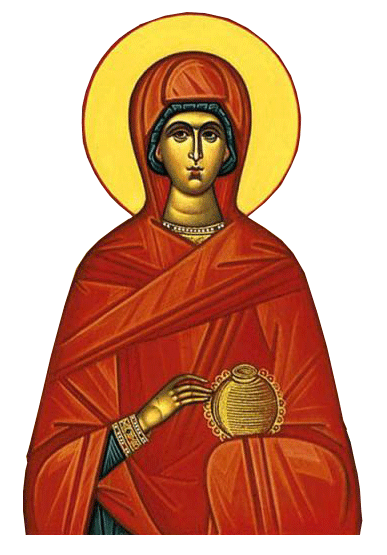Saint Sampson the Hospitable was the son of rich and illustrious Roman parents. In his youth he received an excellent education, he studied the medical arts and doctored the sick without charge.
After the death of his parents, Saint Sampson generously distributed alms and set his slaves free, preparing himself to go into the wilderness.
With this intent in mind, he soon journeyed from Rome to the East. But the Lord directed him onto a different path, that of service to neighbour, and so Saint Sampson came to Constantinople.
Settling into a small house, the saint began to take in homeless wanderers, the poor, and the sick, and he attended to them. The Lord blessed the efforts of Saint Sampson and endowed him with the power of wonderworking.
He healed the sick not only through being a skilled physician but also as a bearer of the grace of God. News of Saint Sampson spread abroad. The patriarch heard of his great virtue and ordained him to the holy priesthood.
It was revealed to the grievously ill Emperor Justinian (527-565), that he could receive healing only through Saint Sampson. In praying, the saint put his hand on the afflicted area, and Justinian was healed.
In gratitude, the emperor wanted to reward his healer with silver and gold, but the saint refused and instead asked Justinian to build a home for the poor and the sick. The emperor readily fulfilled his request.
Saint Sampson devoted the rest of his life to serving his neighbour. He survived into old age and after a short illness, he departed peacefully to the Lord.
The saint was buried at the church of the holy Martyr Mocius, and many healings were effected at his grave. His hospice remained open, and the saint did not cease to care for the suffering. He appeared twice to a negligent worker of the hospice and upbraided him for his laziness.
At the request of an admirer of Saint Sampson, the hospice was transformed into a church, and beside it a new edifice was built for the homeless.
During the time of a powerful fire at Constantinople, the flames did not touch the hospice of Saint Sampson. Through his intercession, a heavy rain quenched the fire.

Saint Joanna the Myrrhbearer, wife of Chusa, the household steward of King Herod, was one of the women following and attending the Lord Jesus Christ during the time of His preaching and public ministry.
She is mentioned in Luke 8:3 and 24:10. Together with the other Myrrh-bearing Women, Saint Joanna went to the Sepulchre to anoint the Holy Body of the Lord with myrrh after His death on the Cross, and she heard from the angels the joyful proclamation of His All-Glorious Resurrection.
According to Tradition, she recovered the head of Saint John the Baptist after Herodias had disposed of it (24 February).
Source: Basilica.ro
















